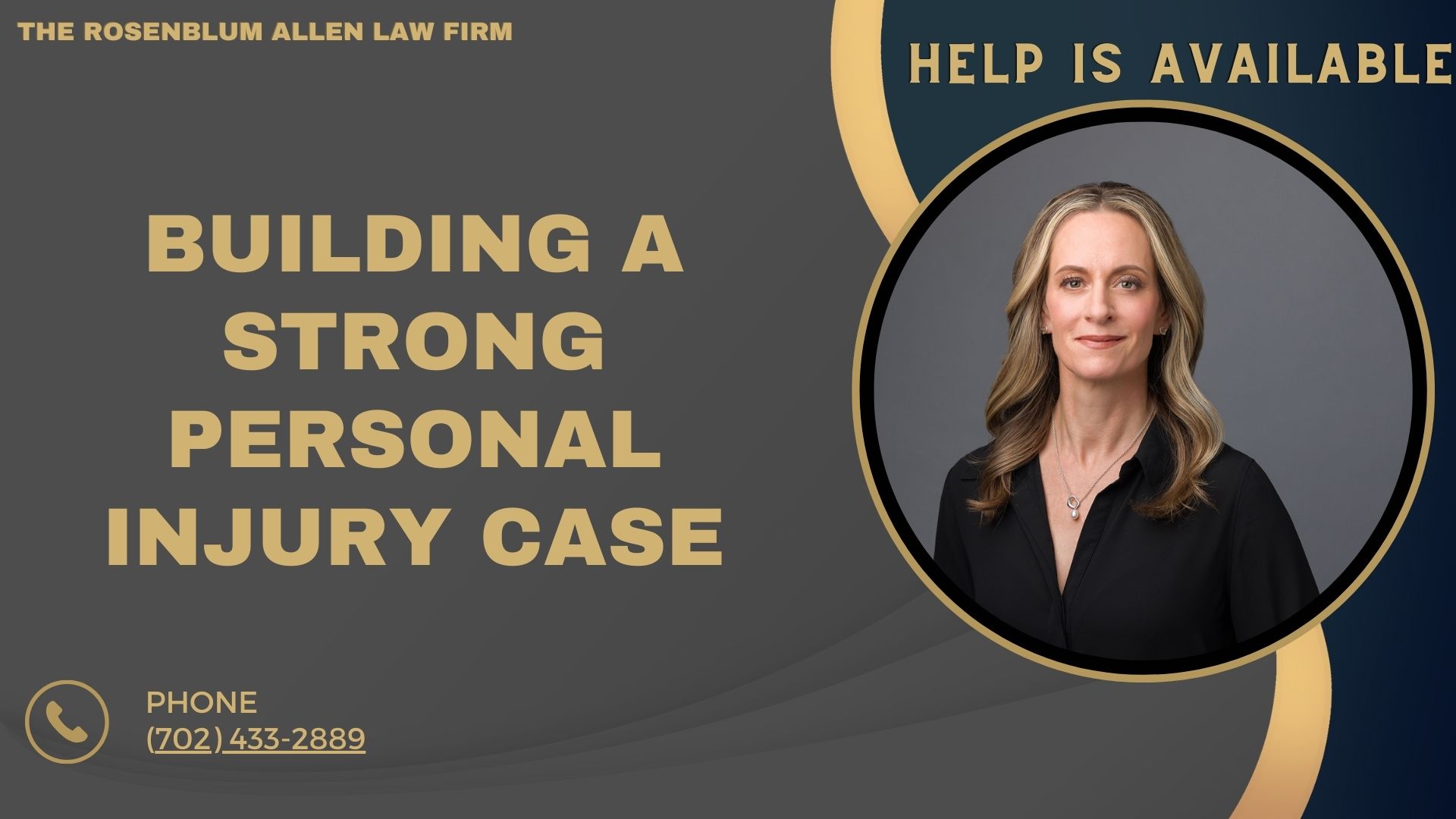Medical documentation plays a vital role in personal injury cases. If you’ve been injured due to an accident, clear and accurate medical records can make or break your case. These records serve as objective evidence that supports your claims about the extent of your injuries, the treatment you’ve received, and the pain you’ve endured. Without proper documentation, your case could be weaker, potentially leading to a reduced settlement or even dismissal of your claim.
In this article, we’ll explore why medical documentation is so important in personal injury cases and how you can use it to build a strong case.
Understanding Medical Documentation
Definition and Purpose
Medical documentation refers to the records created by healthcare professionals that detail your medical history, diagnoses, treatments, and overall health condition. These documents are essential for your personal injury case because they provide the factual evidence needed to substantiate your claims of injury and the associated costs.
The primary purpose of medical documentation is to ensure that your injuries are properly understood and validated by the healthcare system and, in turn, the legal system.
Key Components of Thorough Medical Documentation
When building your personal injury case, the following components of medical documentation will be crucial:
- Doctor’s Notes: These notes capture your physician’s evaluation, treatment plan, and ongoing care instructions. They are essential in demonstrating the connection between your injury and medical intervention.
- Test Results: Diagnostic tests, such as X-rays, MRIs, and CT scans, provide objective proof of physical injury and its severity.
- Treatment Plans: This includes prescribed medications, physical therapy regimens, and recommended surgeries, all of which outline the treatment journey.
- Follow-up Visits: Regular check-ups and progress assessments can highlight how your condition evolved, showing the long-term impact of your injuries.
This documentation forms the backbone of your claim, offering undeniable proof of the physical harm and the care required for recovery.
Types of Medical Documentation Used in Personal Injury Cases
Medical Records from Healthcare Providers
Medical records are the most common form of documentation used in personal injury cases. These records are compiled by your healthcare providers, including general practitioners, specialists, and hospitals.
Doctor’s Notes and Assessments
Your doctor’s notes offer a detailed record of each visit, including:
- The nature of your injury and symptoms
- Any relevant tests or examinations performed
- Diagnoses and medical opinions
- Recommended treatments or procedures
These notes give an in-depth picture of the injury’s impact on your health and daily life.
Diagnostic Tests and Imaging Reports
Tests such as MRIs, X-rays, and CT scans are crucial in proving the physical evidence of your injury. These reports:
- Provide clear images of the injured area
- Document the severity and location of the injury
- Serve as unbiased, scientific evidence that supports your claim
These test results are often pivotal in establishing the full extent of your injuries, which is critical for determining compensation.
Treatment Plans and Prescriptions
A comprehensive treatment plan outlines the steps needed to address your injuries and help you recover. It may include:
- Medications prescribed to manage pain or promote healing
- Physical therapy or rehabilitation programs to restore functionality
- Scheduled follow-up visits to track progress
These records show that you’ve been proactive in seeking treatment and following medical advice, which is important for your case.
Medications Prescribed
The documentation of prescribed medications includes:
- The names of the medications
- Dosage and frequency
- Duration of the prescription
This information helps demonstrate the seriousness of your injury and the ongoing treatment required to manage it.
Rehabilitation and Physical Therapy Details
Rehabilitation records document:
- Types of therapies you’re undergoing
- Frequency and duration of treatments
- Progress made during therapy
These records help showcase the effort and time needed for recovery, further strengthening your claim for compensation.
Surgical and Hospital Records
If your injuries required surgery or hospitalization, these records are essential for your case.
Emergency Room Visits
If you went to the ER following the accident, the records will detail:
- The nature of the injury
- Immediate treatment provided
- Any tests or procedures done to stabilize your condition
These records provide vital evidence of the initial response to your injury.
Surgical Procedures and Recovery Notes
If surgery was required, records from the procedure, including:
- The type of surgery performed
- Post-surgical care and instructions
- Recovery timelines and complications
These documents provide clarity on the extent of your injury and the invasive nature of the required treatment.

How Medical Documentation Strengthens Your Personal Injury Claim
When it comes to personal injury claims, medical documentation is your strongest ally. It provides solid evidence to support your case. Here’s how medical documentation strengthens your claim:
Establishing the Extent of Injuries
Medical records are the most reliable way to prove the severity of your injuries. They give clear, objective evidence of:
- What happened to you: The doctor’s diagnosis and findings tell the story of your injury from a medical perspective.
- How severe the injury is: Test results and doctor’s assessments show how serious your injuries are, whether they are temporary or permanent.
- How long recovery may take: Medical documentation indicates the expected duration of your recovery, which helps show the impact on your daily life.
These records validate the physical damage and help show the true extent of your suffering. Without them, it would be harder to prove that the injury is as serious as you claim.
Demonstrating Treatment History
Your treatment history plays a crucial role in proving your injury and its impact on your life. Medical records document:
- What treatments you’ve undergone: From initial consultations to follow-up care, doctors will record every step of your recovery process.
- The progression of your condition: Records of your recovery show how well (or poorly) you’ve responded to treatment. If you’re still struggling with pain or mobility, it’s documented.
- Medical advice you’ve received: Doctor’s notes can show that you’ve followed all recommendations for recovery.
These records help prove that you’ve been diligent in seeking the right care. They also show that the injury required ongoing medical intervention.
Supporting Compensation Demands
When you’re seeking compensation for a personal injury, medical documentation is key to justifying your claims for financial recovery. Here’s how it helps:
- Medical expenses: Documentation of treatments, hospital stays, surgeries, and medication provides the proof needed to demand reimbursement for medical costs.
- Pain and suffering: Your pain, mental anguish, and suffering can be supported by medical records. Doctors will often note the impact of the injury on your quality of life.
- Lost wages: If your injury caused you to miss work, your medical records may show the length of time you were unable to work due to recovery.
In short, medical documentation helps you quantify your losses, making it easier to determine an appropriate settlement amount.
Common Mistakes to Avoid with Medical Documentation
While medical documentation is vital to your case, there are several common mistakes that can weaken your claim. Here’s what to watch out for:
Delayed Medical Treatment
If you wait too long to seek medical treatment after an accident, it may appear that your injuries are not as severe as you claim. Insurance companies may argue that if the injury was truly significant, you would have sought immediate care.
Incomplete or Inconsistent Records
Your records must be thorough and consistent. Missing details or conflicting notes can raise questions about the validity of your injuries. If your doctor misses important information or contradicts previous assessments, it can hurt your case.
Failing to Follow Doctor’s Recommendations
If you don’t follow your doctor’s advice—such as skipping physical therapy appointments or not taking prescribed medications—it can be argued that your recovery was delayed due to your own negligence, not the severity of your injury.
Missing Documentation of Ongoing Symptoms
Sometimes, injuries don’t heal as expected, and symptoms linger. If you don’t keep track of ongoing issues, it may be hard to prove that the injury still affects your life. Make sure to document every visit, symptom, and change in condition, so you have a full record of your recovery.
Avoiding these mistakes is crucial to maintaining the integrity of your case. Ensure that all documentation is complete, consistent, and timely.

Working with Medical Professionals to Ensure Proper Documentation
Your healthcare providers are essential partners in ensuring your medical documentation is complete and accurate. Here are a few tips for working with them effectively:
Importance of Clear Communication with Healthcare Providers
It’s important to communicate clearly with your doctors. Make sure they fully understand how the injury is affecting you.
- Be honest: Always describe your symptoms in detail. The more specific you are, the better they can treat and document your condition.
- Ask questions: If you’re unsure about something, ask your healthcare provider to explain it. You want to be sure that everything is documented accurately.
Good communication ensures that your records reflect the true extent of your injury.
Requesting Copies of All Medical Records
Make sure you get copies of all your medical records. This will help you keep track of your treatment history and ensure there are no gaps.
- Request records promptly: Don’t wait for your case to move forward before gathering your medical documentation.
- Organize your records: Keep all your medical documents in order. It will make it easier for your attorney to review and use them in your case.
Keeping Personal Records and Notes
In addition to your healthcare provider’s notes, keep a personal record of your symptoms and treatments. Write down:
- How you feel each day
- Any changes in your condition
- The impact of the injury on your daily activities
This can help fill in any gaps in the official documentation and give your case a more personal touch.

Breaking It All Down
In a personal injury case, medical documentation is your strongest piece of evidence. It tells the story of your injuries, treatments, and recovery in a way that words alone cannot. By gathering thorough and accurate medical records, you give your case the best chance of success.
Remember, your medical records serve as objective proof that your injury is real and significant. Without them, it can be hard to prove the true extent of your suffering and losses. Keep detailed records, follow your doctor’s advice, and don’t hesitate to request copies of all relevant documents.
By avoiding common mistakes, staying proactive, and working closely with your healthcare providers, you can ensure that your medical documentation strengthens your personal injury claim. With the right documentation in hand, you’ll be better positioned to receive the compensation you deserve.
Take control of your case—your health, recovery, and future depend on it.

Frequently Asked Questions
What is considered "medical documentation" in a personal injury case?
Medical documentation refers to any records created by healthcare providers that detail your diagnosis, treatment, and progress. This includes doctor’s notes, test results, prescriptions, treatment plans, and hospital records. These documents help establish the severity of your injuries and the treatment required for recovery.
How can I get my medical records?
You can request your medical records directly from the healthcare provider’s office, hospital, or clinic where you received treatment. You may need to fill out a request form or provide identification to access your records. It’s important to make these requests as soon as possible to ensure you have everything needed for your case.
Do I need to see a doctor immediately after an accident?
Yes, seeing a doctor immediately after an accident is crucial, even if you feel fine at first. Some injuries, like whiplash or internal injuries, might not show symptoms immediately. Early treatment ensures your injuries are documented, which is important for both your health and your personal injury claim.
How do doctors determine the severity of my injury for my case?
Doctors evaluate your symptoms, perform physical exams, and may conduct diagnostic tests (like X-rays or MRIs) to determine the severity of your injuries. Their findings and opinions are documented in your medical records and help establish the extent of the injury in legal proceedings.
Can I still file a personal injury claim if I didn’t keep track of all my medical records?
While it’s ideal to have comprehensive medical records, you can still file a claim. However, not having full documentation may make it harder to prove the extent of your injuries and justify your compensation demands. It’s important to gather whatever records you can and work with your lawyer to strengthen your case.
What should I do if my doctor’s notes are unclear or incomplete?
If you notice any unclear or incomplete information in your doctor’s notes, it’s important to address it right away. Contact your healthcare provider to clarify or request an updated note. Clear and complete records are essential for your personal injury case, and any discrepancies could affect the outcome.
Is there a deadline for obtaining medical records after an injury?
There is no strict deadline for obtaining medical records, but the sooner you request them, the better. Getting them early allows you to organize everything and gives you enough time to address any issues before filing your claim. Additionally, insurance companies and courts may require these documents as part of your case.
How can I ensure that my medical records are properly documented throughout my recovery?
To ensure proper documentation, communicate openly with your doctor about how the injury is affecting your daily life. Follow the prescribed treatment plan and attend all appointments. Keep personal notes on your symptoms and how the injury impacts your routine, and make sure your doctor records any relevant changes in your condition.
What role do medical records play in determining my compensation?
Medical records help establish the extent of your injuries, the required treatments, and the overall impact on your life. These documents serve as evidence for medical expenses, pain and suffering, lost wages, and other damages, helping to determine a fair compensation amount.
What if I missed medical appointments or failed to follow my treatment plan?
Missing appointments or failing to follow your treatment plan can hurt your case. It may be seen as a sign that your injuries weren’t serious or that you didn’t take your recovery seriously. If this happens, it’s important to explain why to your attorney and healthcare provider, as they may help mitigate the impact on your claim.

Additional Resources for You from The Rosenblum Allen Law Firm.
If you’re dealing with a no-fault claim, you may also need legal help for related issues. Here are some valuable resources that can guide you through different personal injury cases:
Las Vegas Personal Injury Attorney – Learn more about how our experienced attorneys handle all types of personal injury cases, ensuring you receive the compensation you deserve.
Las Vegas Car Accident Attorney – If you’ve been injured in a car accident, this resource covers your legal options and how to protect your rights in an at-fault system.
Motorcycle Accident Lawyer Las Vegas – Motorcycle accidents often result in serious injuries. Find out how our legal team can help you recover damages.
Wrongful Death Lawyer Las Vegas – If you’ve lost a loved one due to someone else’s negligence, our wrongful death attorneys can help you seek justice and compensation.
Truck Accident Attorney Las Vegas – Accidents involving large trucks can be complex. Learn how our attorneys handle these cases to ensure fair settlements.
Las Vegas Drunk Driving Accident Attorney – Drunk driving accidents can be devastating. This resource explains your legal rights and how to hold the responsible party accountable.
Need personalized legal guidance? Contact our team at The Rosenblum Allen Law Firm for a free consultation today. We’re here to help!

Offsite Resources for You
American Bar Association – The ABA offers a wide range of legal resources and guides to help you understand the legal process, including personal injury cases.
FindLaw – FindLaw provides legal information and articles on personal injury, medical documentation, and much more.
National Institutes of Health (NIH) – The NIH is a valuable source for medical research, health information, and understanding how injuries may affect your health over time.
American Medical Association – The AMA offers insights into the role of medical professionals in injury cases and the importance of accurate medical documentation.
Centers for Disease Control and Prevention (CDC) – The CDC provides information on the types of injuries commonly seen in personal injury cases and the long-term effects of those injuries.
National Institute of Neurological Disorders and Stroke (NINDS) – For those suffering from neurological injuries, NINDS provides valuable information on diagnosis, treatment, and recovery.
Justice.gov – The U.S. Department of Justice offers legal resources and can help you understand how medical documentation fits into personal injury law.

A Special Message from Our Lead Attorney, Molly Rosenblum Allen, Esq

Thank you for taking the time to explore these resources. I hope they have helped clarify the importance of medical documentation in your personal injury case. If you’re ready to take the next step and discuss your situation, my team and I are here to help. Please feel free to call us at (702) 433-2889 to get the ball rolling. We look forward to working with you!
Warm regards,
Molly Rosenblum Allen, Esq.






